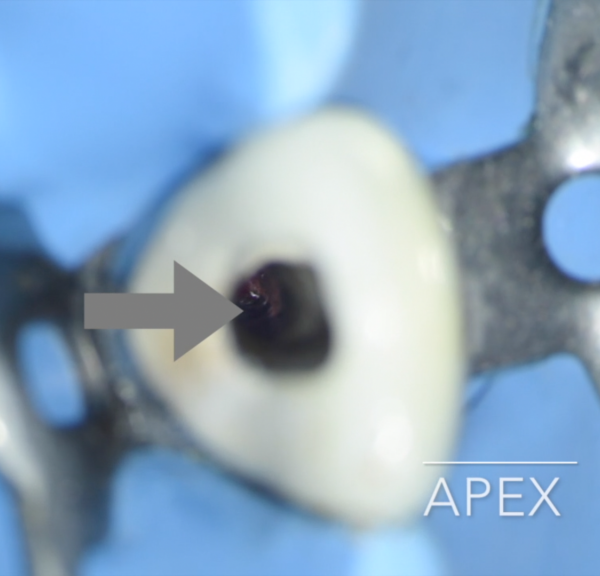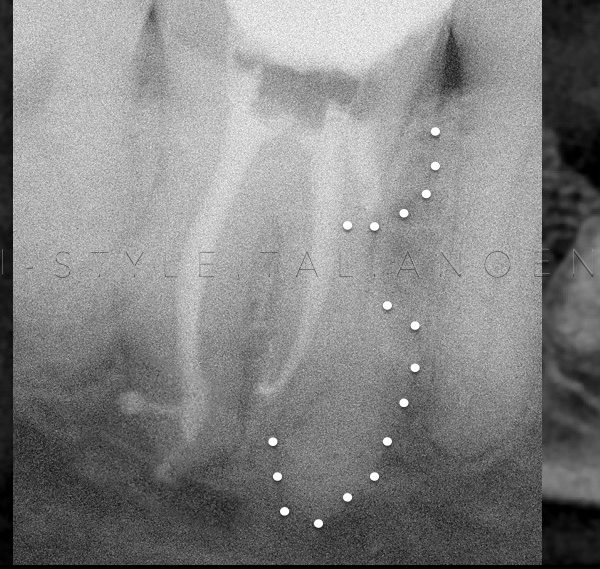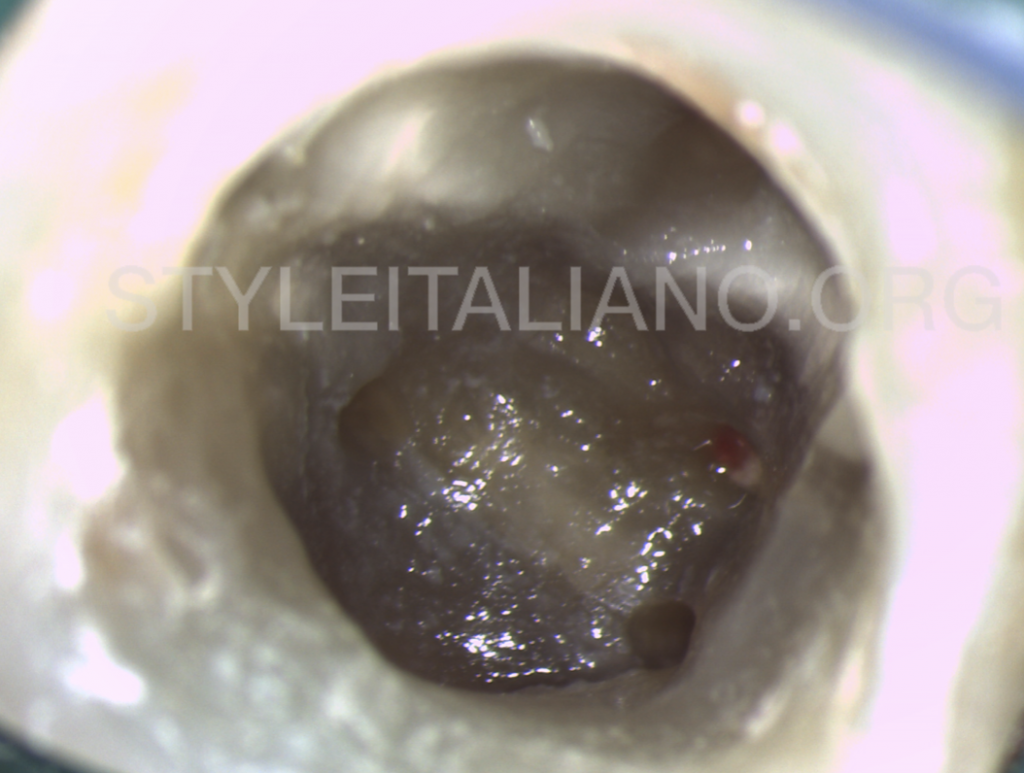
Management of iatrogenic root perforations: a case report
12/07/2020
João Meirinhos
Warning: Undefined variable $post in /var/www/vhosts/styleitaliano-endodontics.org/endodontics.styleitaliano.org/wp-content/plugins/oxygen/component-framework/components/classes/code-block.class.php(133) : eval()'d code on line 2
Warning: Attempt to read property "ID" on null in /var/www/vhosts/styleitaliano-endodontics.org/endodontics.styleitaliano.org/wp-content/plugins/oxygen/component-framework/components/classes/code-block.class.php(133) : eval()'d code on line 2
Iatrogenic perforation can occur during different steps of the endodontic treatment which can be challenging or compromised with this procedural mishap. The purpose of this article is to report and present the nonsurgical approach to manage root perforations, located in the pulp chamber.
Root perforation is a mechanical, iatrogenic, or pathologic communication between the root canal system and the external tooth surface1. Iatrogenic perforations are reported to occur in approximately 2–12% of endodontically treated teeth2. Treatment options may vary according to several factors, (size, location, time and shape)2, and can go from nonsurgical repair to tooth extraction. Bioactive material, such as MTA, have been widely used to repair and seal these defects since it is believed they enhance the success rate of such repairs.3,4. A correct diagnosis of this mishaps it is not always easy and it’s sometimes a conjunction of several specific signs and symptoms but it is essential in order to manage them, if possible, with a predictable treatment protocol5.
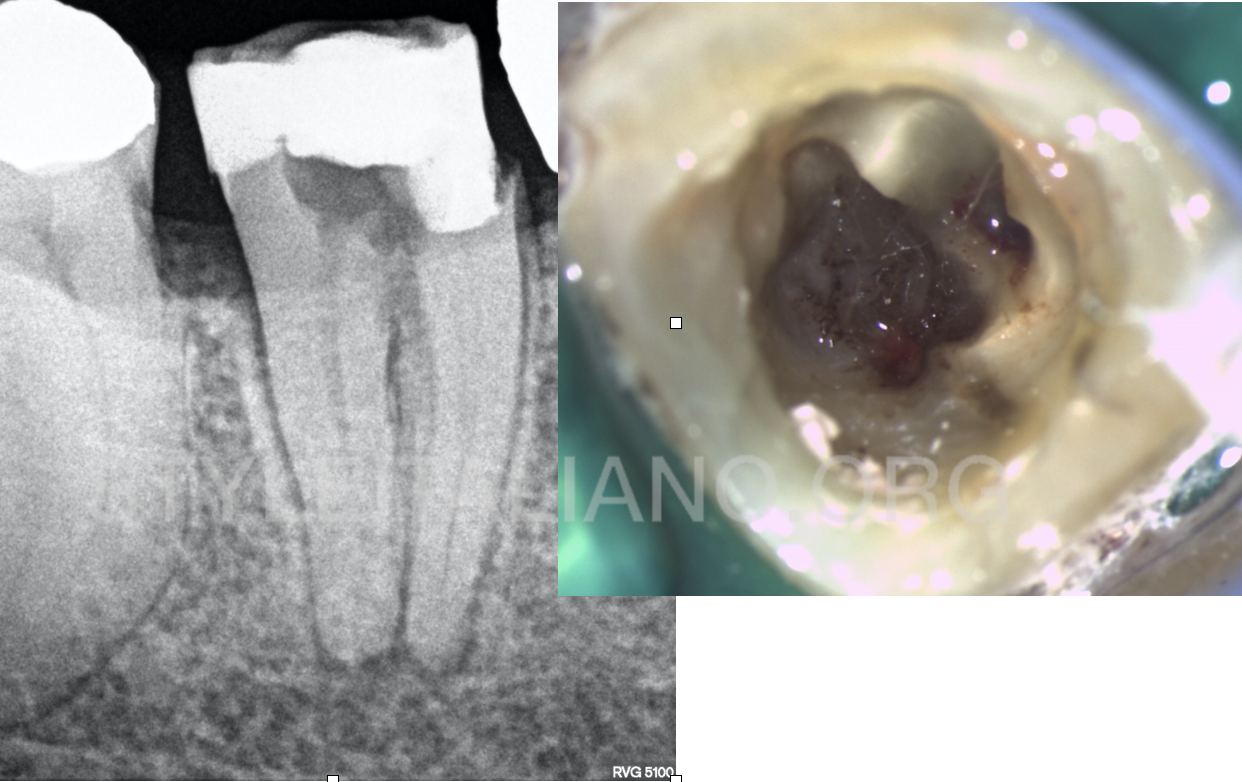
Fig. 1
A 67-year-old female patient was referred by general practitioner after iatrogenic furcal perforation related with a inadequate access to the pulp chamber or while trying to locate the mesial canals on tooth 47 who was diagnosed with a necrotic pulp and asymptomatic apical periodontitis.
After evaluation and recognition of the size and location of the perforation under the use of surgical microscope, a nonsurgical approach was proposed.

Fig. 2
The non surgical treatment started with establishing access with Ultrasonic tips and location of all canal orifices. Two mesial canals were found, and a coronal pre-flaring was done to increase retention and allow coverage of the entrance of the canals (with gutta-percha cones and teflon) to prevent any material from going into them during the perforation repair.
The perforation repair was sealed with MTA.
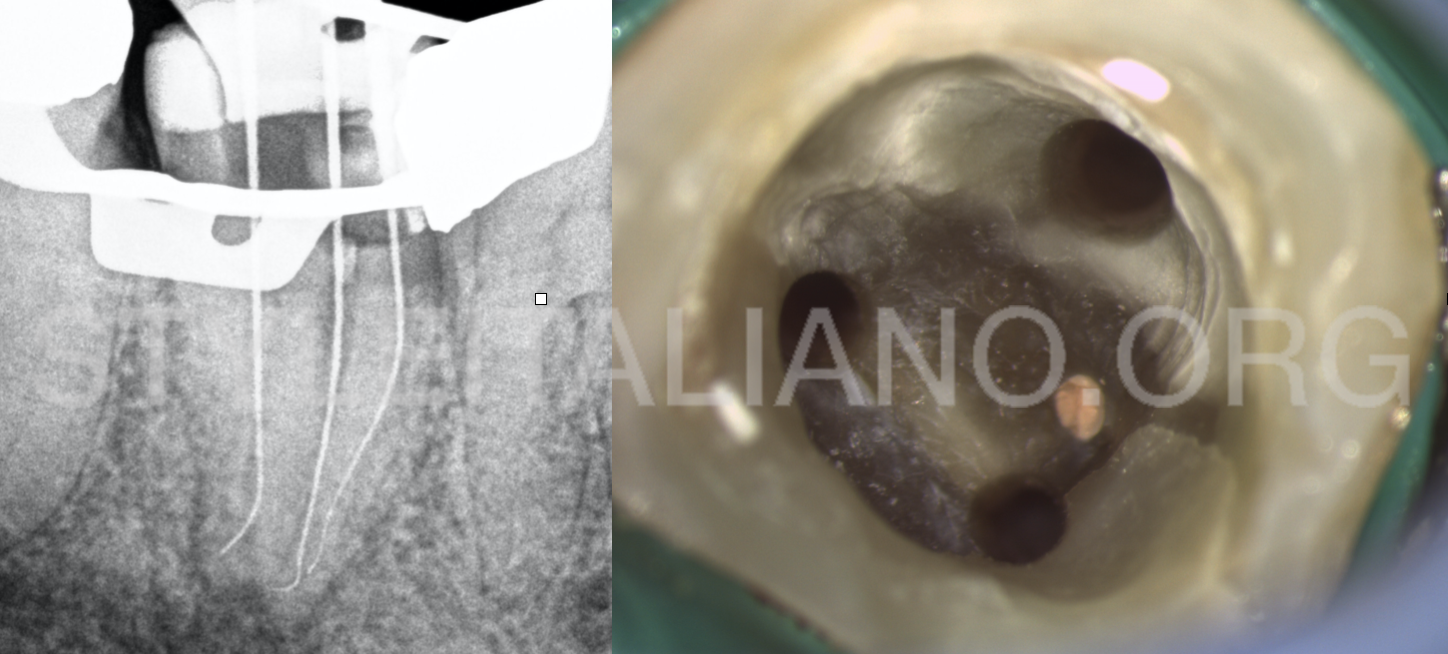
Fig. 3
The canals were scouted with 10k and 15k stainless-steel hand files. To determine the working length, an electronic apex locator was also used. All the canals were shaped with Reciproc files (r25, r40) according to the manufacturer’s instructions.
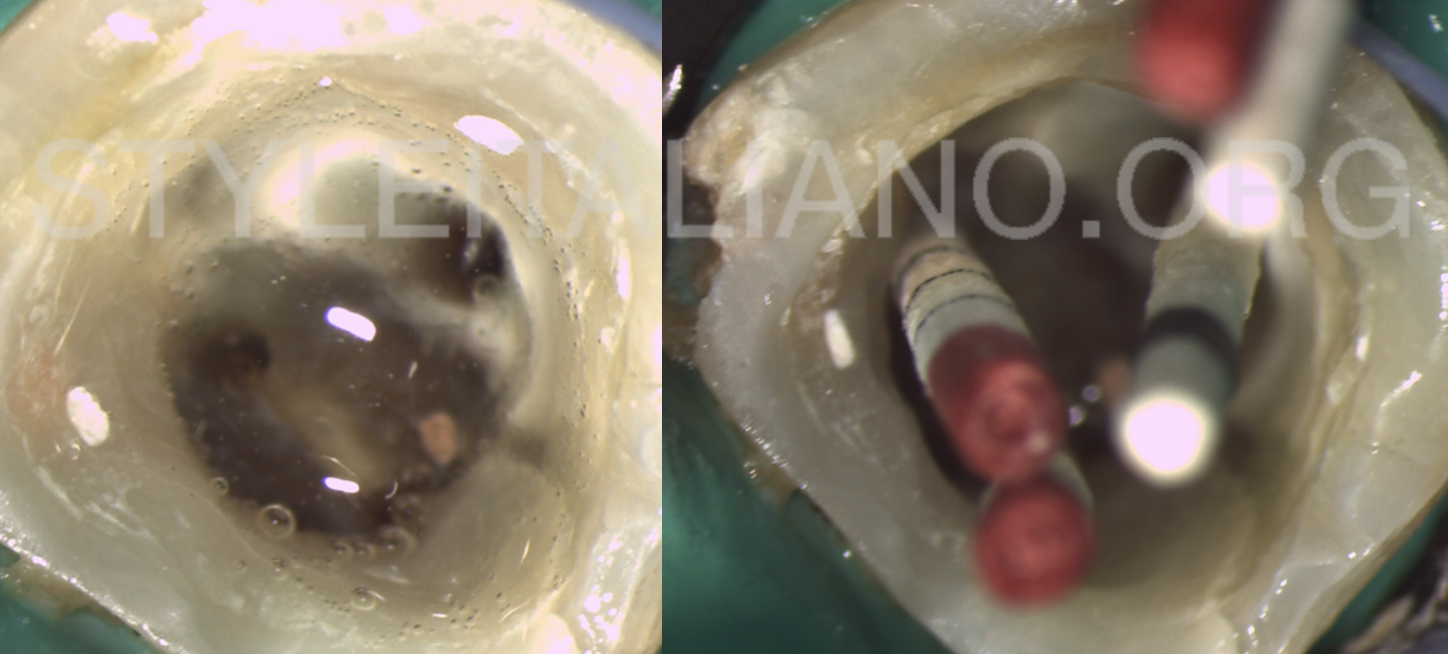
Fig. 4
Copious irrigation with 5mL syringe and a 27G notched needle with 5,25% sodium hypochlorite was done all throughout the endodontic treatment.
The canals were dried with paper points.
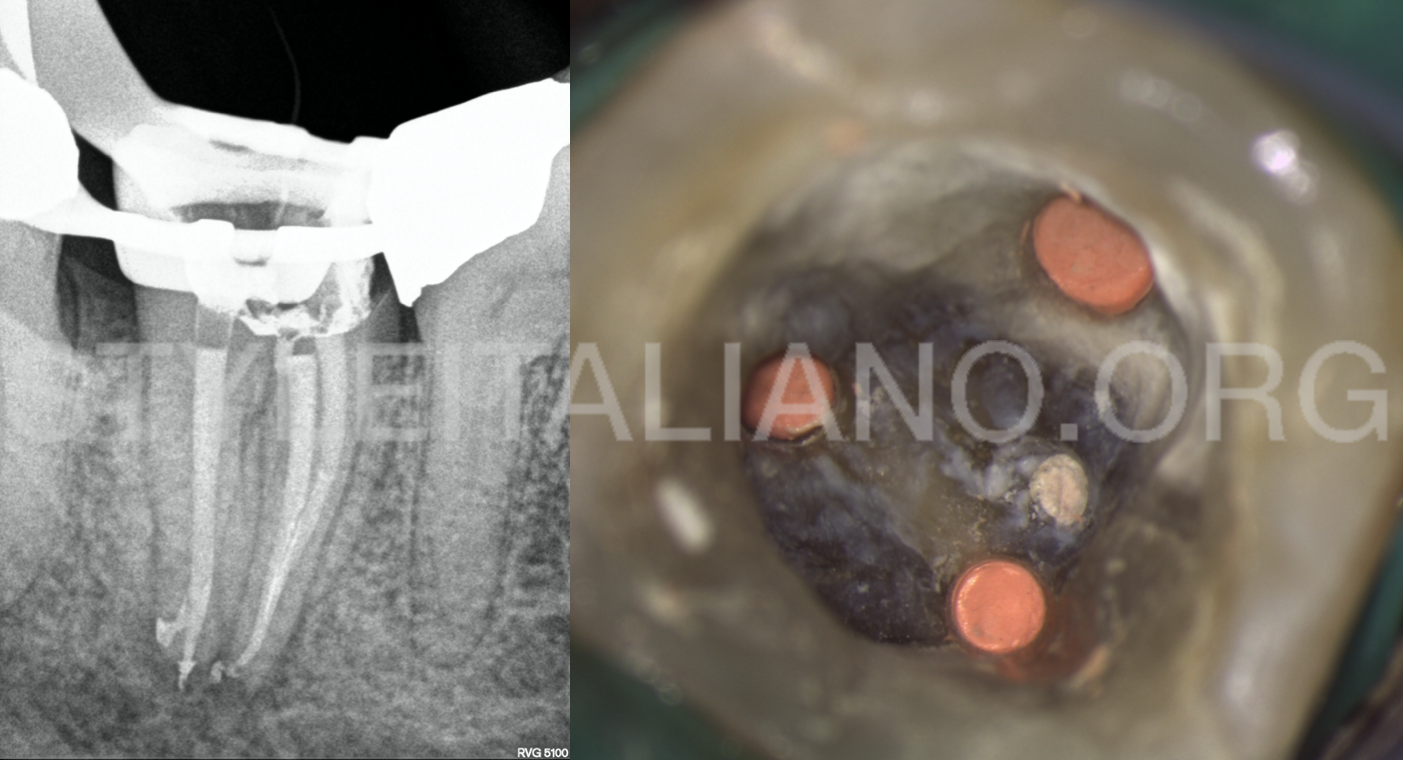
Fig. 5
The canals were filled with gutta-percha and resin sealer with a continuous wave of obturation technique.
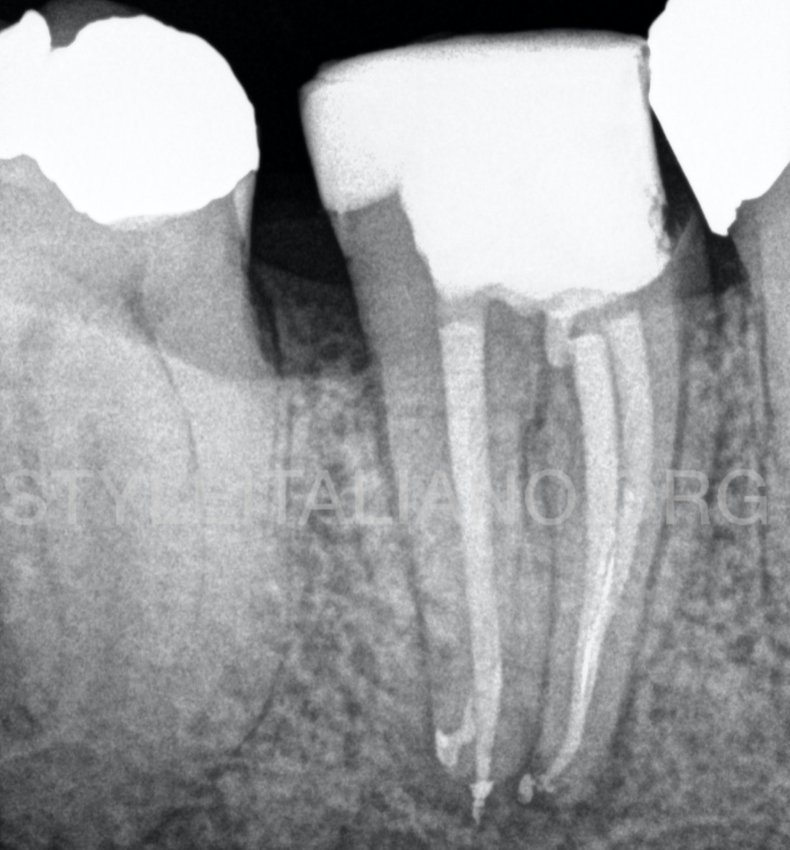
Fig. 6
The canals were sealed with a flowable composite resin and a cuspal coverage restoration was recommended.
Conclusions
A perforation is a serious complication and its repair may be a frustrating problem to the dentist but if discovered early and properly managed, it is possible to prolong the survival of the tooth. The nonsurgical treatment option for root perforations located on the pulp chamber has a favourable prognosis as shown in this case series.
Bibliography
- American Association of Endodontists. Glossary of Endodontic Terms, 8th ed. Chicago: American Association of Endodontists; 2012.
- Tsesis I., Fuss Z. (2006); Diagnosis and treatment of accidental root perforations; Endodontic Topics, 13, 95–107
- Clauder T.,Shin SJ (2009); Repair of perforations with MTA: Clinical Applications and Mechanisms of Action; Endodontic Topics, 15, 32–55;
- Siew, K., Lee, A. H. C., & Cheung, G. S. P. (2015). Treatment Outcome of Repaired Root Perforation: A Systematic Review and Meta-analysis. Journal of Endodontics, 41(11), 1795–1804.
- Ford, T. R., Torabinejad, M., McKendry, D. J., Hong, C. U., & Kariyawasam, S. P. (1995). Use of mineral trioxide aggregate for repair of furcal perforations. Oral Surgery, Oral Medicine, Oral Pathology, Oral Radiology, and Endodontology, 79(6), 756–763.


